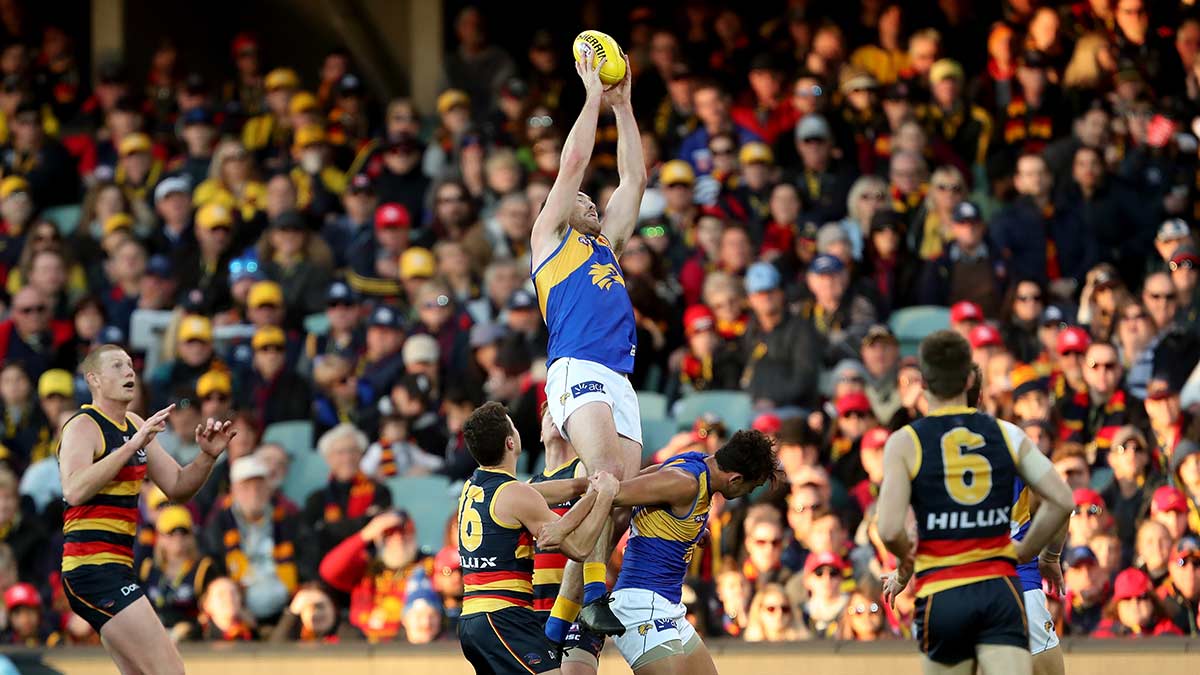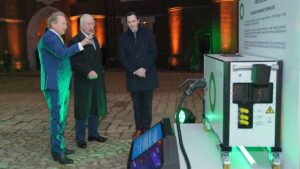Monsters of Rock: Lithium giant Pilbara Minerals says dividend unlikely, but low costs keep Pilgangoora flying high

Pic: Via Getty
- Pilbara Minerals says 2024 dividend unlikely despite turn in lithium market
- Whitehaven Coal bats away questions on costs after mega BHP mine buy
- Iluka down as mineral sands volumes slide, funding negotiations with Canberra on rare earths blowout continue
Those hoping for a fast return to dividend payments from cashed up lithium miner Pilbara Minerals (ASX:PLS) will probably be disappointed, with boss Dale Henderson flagging it as ‘unlikely’ after a nosedive in lithium prices that came through in the March quarter.
PLS delivered 179,000t and sold 165,100t in the March quarter at a realised price of US$804/t, down 28% on the average US$1113/t selling price in the December quarter.
That saw revenue fall 27% to $192m (for $950m YTD), though strong cost performance ensured the Pilgangoora operations were still pumping out plenty of cash, with unit operating costs on a CIF (delivered) basis of US$519/dmt and FOB (on ship) basis of US$444/t.
But the miner’s cash balance declined from $2.1b to $1.8b as Henderson flagged the need to conserve cash for growth projects with the company continuing to invest in its staged expansions to 680,000tpa and 1Mtpa at Pilgangoora, a mid-stream demonstration plant and now a study with Ganfeng on a proposed ex-China lithium refinery.
The company helped pump up lithium indices late in the March quarter with a 5000t sale of 5.5% Li2O spodumene at US$1106/t (US$1200/t SC6) via its Battery Material Exchange auction platform.
.@PilbaraMinerals (#ASX:$PLS) restarts its BMX #lithium auctions, pulling prices well above spot on a 5000t #spodumene cargo. https://t.co/BgVCuIRvKS
— Stockhead (@StockheadAU) March 14, 2024
However, it has already flagged that future sales are unlikely this year given most of its material is allocated for customers. Also unlikely are dividends, paused in February’s half-year results after bumper returns sparked by temporary extraordinary lithium prices prompted payouts in FY23. Henderson said capital distributions would be a tough ask given the volume of capex on the cards.
PLS flagged stronger production numbers could be flowing through from the next quarter, with Pilgangoora operating at a record 80,000t rate in March (960,000tpa), with operating costs falling below $625/t (AUD) thanks to the continuous operation of its P680 configuration plant, higher grades and strong recoveries brought about with the use of mobile ore sorters.
Jarden analyst Ben Lyons said Pilbara’s production was 3% below its estimates and sales 11% off forecast, or 7% down on consensus estimates.
But prices came in 6% ahead of Jarden’s US$758/t estimate. With the lower than expected sales volumes (and impacted by the same weather problems that hurt Pilbara iron ore producers early in the March quarter), unit costs came in 15% above Jarden estimates, though they ran well below that level in March.
Despite the weak sales, Lyons called it a ‘robust’ result. Jarden has a $4.14 price target and buy rating on PLS.
Pilbara Minerals (ASX:PLS) share price today:
Hendo on the market: EV sales are up, so are lithium prices
While the price movement wasn’t great in March — PLS ate a 1.3% loss in early trade as investors digested their impact — Henderson believes we have seen a genuine uptick over the past 60 days.
He noted Rhomotion data showed at 3.2 million sales, EV shipments have increase 23% YoY in the March quarter, a far cry from suggestions from some quarters of a scale back in demand.
Henderson said there had been supply curtailments in response to weak pricing as well as environmental inspections, most notably in China.
“On a quarter to quarter basis moving from December to March quarter, (there was) an average decline across all metrics. However, when you look at the past 60 days up to mid-April, the increases are fairly material,” Henderson told analysts.
“Over the last sort of 60 days to the 16th of April, we’ve seen a 27% increase for spodumene concentrate in an average of the five PRAs (price reporting agencies).
“As it relates to Chinese domestic carbonate, the last 60 days has been a 14% increase, utilising the SMM (Shanghai Metals Market) sources and seaborne hydroxide past 60 days, a 6% increase care of Fastmarkets.
“So those numbers obviously underlie the upwards movement that we’ve been discussing.”
When it comes to long term demand, Henderson said Pilbara continues to be pushed for more supply, indicating the supply chain remains positive on lithium demand even after signing offtake deals with three major Chinese customers in the March quarter.
Don’t you worry about [blank], let (BHP) worry about [blank]
A reasonable question was posed on Whitehaven Coal’s (ASX:WHC) quarterly call today: what is the long term outlook for costs on the newly acquired Queensland met coal operations, given the seller BHP (ASX:BHP) reported a big lift in costs for FY24 at its BMA met coal business to US$119-125/t?
While it’s still well below coking coal indices (around US$270/t), the creep in BHP and other Queensland coal miners’ costs have been concerning — less so for BHP which extracts most of its values from iron ore and copper than other regional players.
Whitehaven took the keys at Daunia and Blackwater on April in a deal worth up to US$4.1b ($6.4b) but is yet to provide guidance, which will come for next year with August’s full year results.
It says the mines will transform the fossil fuel producer’s business, shifting its sales balance from ~92% thermal to 70-30 in favour of steelmaking coal, a business with higher premiums and more apparent longevity.
But WHC produces its Hunter Valley thermal coal at much lower costs, producing 4.4Mt in the March quarter and on track to meet FY24 guidance of 18.2-20.7Mt at the upper end of its range of $103-113/t (US$65-72/t).
Realised prices in the March quarter came in at US$136/t for thermal coal, an 8% premium to the Newcastle high CV benchmark of US$126/t, with overall pricing of $219/t (AUD). A small amount of coal was sold to NSW utilities under a reservation scheme at $112/t, which will wrap up at the end of June.
The premium coking coal index averaged US$308/t in the March quarter, down from US$333/t in December. Whitehaven MD Paul Flynn said issues with ballooning costs in Queensland’s coal sector could be put down to awful weather, but also kinda said it was a question for BHP … which is weird since they now own those two mines.
“I don’t think there’s anything systematically wrong with the met coal business up there. So I wouldn’t be inferring that met coal has suddenly become harder. I wouldn’t do that,” he said.
“Clearly, the weather up there has been influential so that’s made things a little bit more inconsistent certainly, than I’m sure the producers out there would like.
“We can only speak to what we’ve observed in a short period of time. We’ve been focused on the two assets that we’ve procured here. I think Daunia has done pretty well and appears to have been less weather affected quite frankly, in terms of in terms of output performance, whereas Blackwater has been a little bit more disrupted in that sense.
“But I don’t think there’s anything systematically wrong and if the data point that you’re using to pose that question all emanate from BHP it’s perhaps best to focus the questions on them in that regard, because our exposure to this is really just limited to the ones that we’ve been obviously dedicating our focus to acquire.”
We’ll have to wait and see what they cost to run, but at least prices are providing a strong buffer.
Flynn noted BHP’s results showed weaker performance from Blackwater, where BHP has invested heavily in waste-stripping. Flynn said the strip ratio was performing in line with pre-acquisition expectations and that Whitehaven will continue to invest in the waste-strip over the next 12 months but said it was “not huge”.
Meanwhile, the coal miner has dumped an autonomous trial with Hitachi at its Maules Creek mine in NSW.
Whitehaven Coal (ASX:WHC) share price today:
Still Iluk-in for govt funds
Iluka Resources (ASX:ILU) says it remains in conversation with the Commonwealth Government to extend a $1.25b credit line after cost escalations at its Eneabba rare earths refinery surged to $1.7-1.8b.
The ASX 100 mineral sands producer and rare earths hopeful is banking on Australia’s determination to break China’s vice grip on rare earths processing to up its support.
The Critical Minerals Facility loan was already controversial when it was delivered by the previous government in 2022 given Iluka’s own corporate weight. It wants to develop the refinery to process monazite waste containing magnet metals left over from mineral sands mining at Eneabba near Geraldton on WA’s Mid West coast.
The plant has also been pitched as a third party processor for other ASX-listed companies and monazite from Iluka’s deposits in Victoria and New South Wales.
So far bulk earth works and ground improvement activities have been completed, with a 302-bed camp currently being commissioned and a further 60 room expansion due to commence soon.
An upgrade of the mine access road is done while a number of long lead procurement packages have been awarded including a roasting kiln.
Iluka’s result showed a big drop in zircon production at the Jacinth-Ambrosia and Mid-West WA projects, with the Narngulu mineral separation plant offline for six weeks until mid-February. Zircon output from Cataby in WA’s South West was also sharply lower, with total zircon, rutile and synthetic rutile production down 17.2% to 86,600t in the March quarter (42.6% down YoY).
Synthetic rutile output in WA was up 359.3% to 37,200t after the restart of the SR2 plant, while ilmenite output rose 96% to 69,000t (though 54.7% down YoY).
Iluka said titanium pigment markets appear to have turned the corner with customers reporting stronger seasonal demand and commentary from pigment producers point to a ‘double digit increase’ in volumes in the second quarter.
Iluka (ASX:ILU) share price today:
Related Topics

UNLOCK INSIGHTS
Discover the untold stories of emerging ASX stocks.
Daily news and expert analysis, it's free to subscribe.
By proceeding, you confirm you understand that we handle personal information in accordance with our Privacy Policy.








